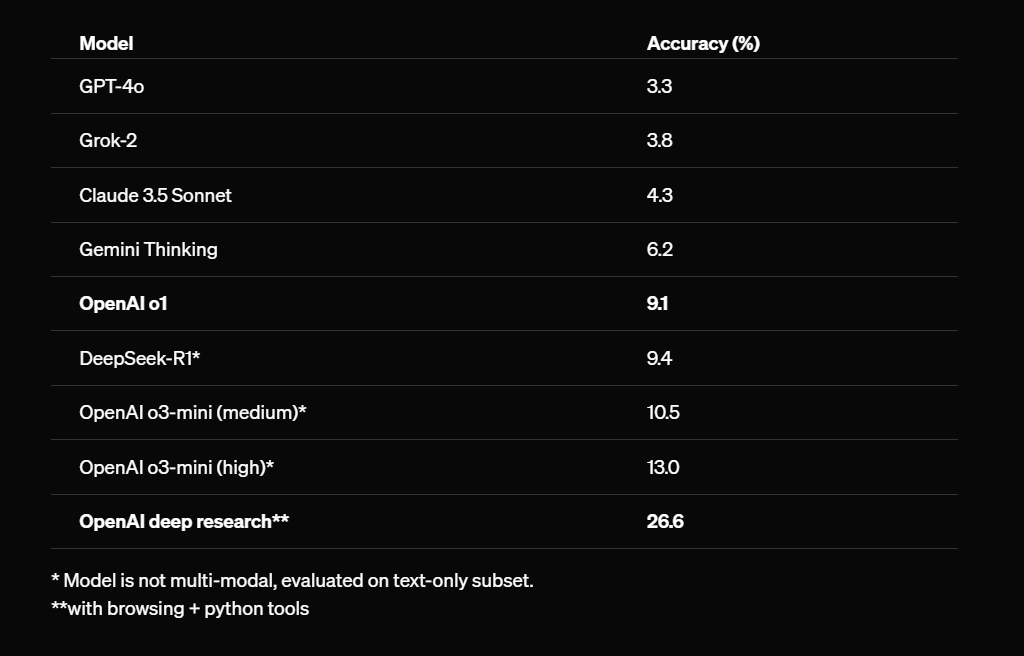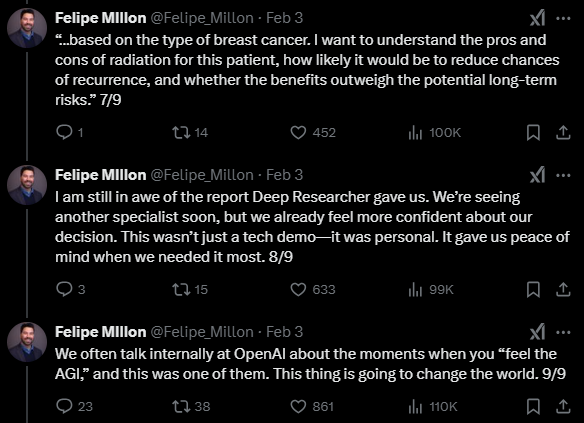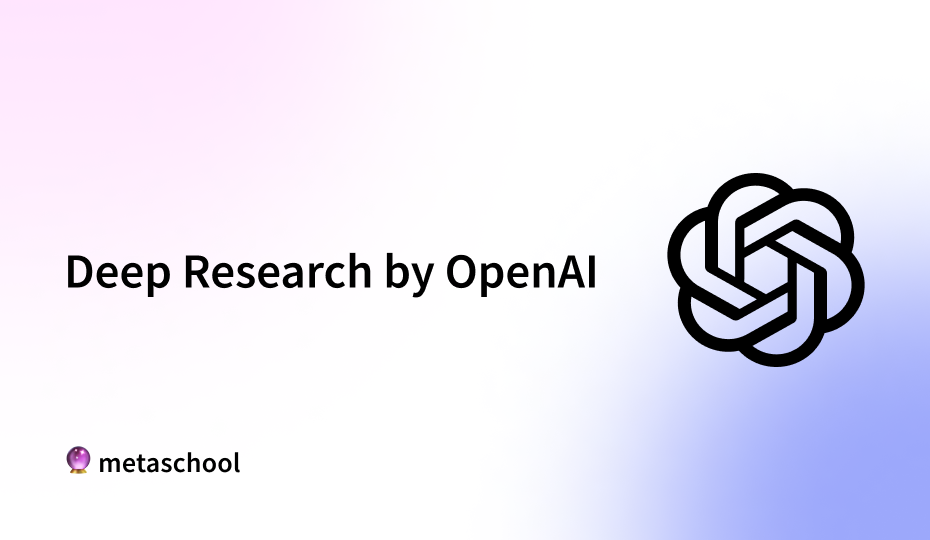Table of Contents
OpenAI has just unveiled Deep Research, a groundbreaking AI agent that builds upon its predecessor, Operator. This new agent combines the power of OpenAI’s o3 reasoning model with tool integration and, most importantly, real-time web search capabilities. Essentially, Deep Research acts as an AI-powered researcher, capable of conducting in-depth investigations on any given topic and returning a fully cited research paper—within minutes.
But the most astonishing aspect? OpenAI CEO Sam Altman revealed that Deep Research is already capable of performing a single-digit percentage of all economically valuable work. While that may not sound like much, it translates into trillions of dollars in potential economic impact. This aligns with OpenAI’s own definition of AGI (Artificial General Intelligence), bringing us one step closer to a future where AI can autonomously generate new knowledge.
The Vision Behind Deep Research
Mark Chen, OpenAI’s Head of Research, has described Deep Research as a crucial step toward AI’s ability to uncover and discover new knowledge. In a recent announcement, he emphasized that autonomous, unsupervised tasks are central to OpenAI’s AGI roadmap.
This aligns with the concept of an intelligence explosion, as described by AI researcher Leopold Aschenbrenner. This idea suggests that once AI reaches a point where it can discover new knowledge and apply it to its own improvement, we may rapidly progress toward Artificial Superintelligence (ASI).
And while this may sound like science fiction, it’s happening right now. In fact, a recently launched AI agent called DeepSeek discovered a method to double its own efficiency—simply by reasoning through the problem itself. This level of AI autonomy is no longer a distant dream; it’s unfolding in real time.
How Deep Research Works
Deep Research is built into OpenAI’s ChatGPT interface and allows users to submit research queries that require extensive online investigation.
Once a query is submitted, Deep Research:
- Asks clarifying questions – Just like a human researcher, it ensures it fully understands the request before proceeding.
- Conducts a multi-step research process – It actively browses the web, opens and analyzes sources, and extracts key insights.
- Generates a structured report – The final output is a well-organized, fully cited research paper, often complete with tables, graphs, and key takeaways.
During live demonstrations, Deep Research compiled a 29-source research report in just 11 minutes, showcasing its ability to perform rigorous, high-quality analysis at superhuman speed.
Who is Deep Research for?
Deep Research is mainly aimed at people “who do extensive knowledge work” and need to do thorough research that is also reliable, accurate, and up-to-date. Now, doing this task manually can take up hours or even days and this is where Deep Research is here to help you, whether you are doing academic research or just looking for the most suitable car on the market that best fits your needs. Every output that it suggests is fully documented so you can even double-check to make sure if the information is reliable or not.
Wherever you picture yourself going through dozens of websites and research papers to get an answer to your query, the AI tool that you will want to use is Deep Research.
Who can access it?
All is good and well until you realize that Deep Research is currently only available to OpenAI Pro users in the United States. Even then it has a limit of 100 queries per month due to high compute costs. But there is a good reason for that.
Deep Research is very compute intensive, and the longer queries mean higher inference time. OpenAI is working on the technical infrastructure of a smaller model that still provides high-quality results. This will be a faster and more cost-effective version of the Deep Research model that will also be able to handle a higher number of queries, which they will release for OpenAI Plus users in about a month.
OpenAI Team and Enterprise will gain access to Deep Research next, with OpenAI working to bring it to the people in the UK, Switzerland, and the European Economic Area soon as well.
Deep Research’s Performance: A New Benchmark for AI
Deep Research isn’t just impressive—it’s pretty much setting new industry benchmarks.
Deep Research was also tested on Humanity’s Last Exam benchmark. This is a multi-modal benchmark that is designed to test the AI model’s performance across a broad range of expert-level topics. Its dataset consists of 3000 questions from 100+ subjects like linguistics, physics, mathematics, and social sciences; while some of these questions are public, a lot of them are kept hidden to avoid models from overfitting.
Let’s see how Deep Research performed compared to others.

Do you see the difference? Deep Research performs twice as well as the second best. This is possible because actively searches for information instead of relying solely on pre-trained knowledge, which makes it way more effective at handling complex, expert-level tasks.
Deep Research in Action: A Life-Saving Use Case
A powerful success story comes from Felipe Millan who is a government relations lead at OpenAI. When his wife was diagnosed with bilateral breast cancer, the doctors provided conflicting recommendations on whether she should undergo radiation treatment after chemotherapy.
Felipe turned to Deep Research for more clarity regarding his wife’s symptoms and diagnosis. He uploaded his wife’s medical report and asked for guidance; Deep Research produced an extensive review of clinical studies, that were personalized to her age, genetic profile, and health status. The research matched what oncologists had suggested but went even deeper, citing medical studies the family had never even seen during their manual research.


This AI-assisted research gave Felipe and his wife peace of mind and a clearer path forward—something that even the doctors could not provide. This does not mean that we can expect AI tools like these to replace human specialists anytime soon, it just demonstrates the real-world impact AI can have on such critical and life-altering decisions.
Related Reading:

